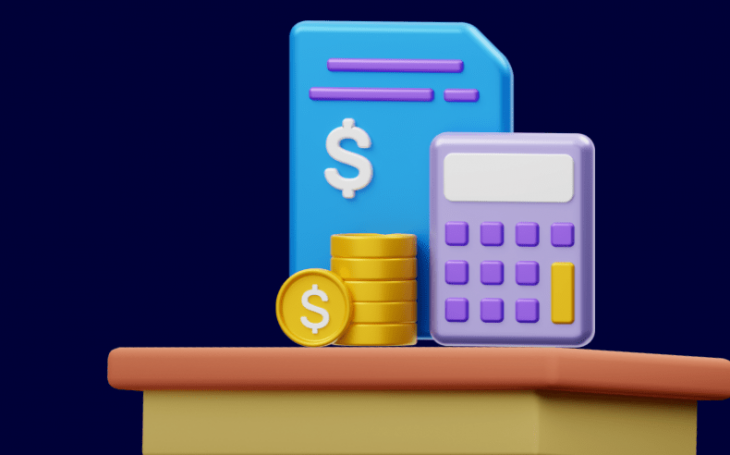


What if I told you that you could use your unpaid invoices as collaterals to secure a loan? Having a hard time believing me? Trust me, it is possible.
A business could indeed get immediate cash by using their invoices as collateral. This idea is not something that popped out of the blue. It happens almost every day, all over the world.Similar to all financial tools, the practice of using invoice as collateral has evolved over the years. Nowadays, Banks and other financial institutions offer a wide range of solutions to relieve the financial strain of unpaid invoices. This article is set to explore the list of options available to resolve the cash-flow squeeze.
Let’s start with the basics: What is an invoice?
A commercial invoice is a legal document issued by the Seller to a Buyer for the services rendered. The purpose of an invoice is to document a business transaction. It lists out all the financial components involved and you could know “how much a customer (buyer) owes the seller” by just glossing over it. The detailed anatomy of the invoice.
Once the seller sends an invoice to the buyer, the Accounts Receivable of the seller would increase and reflect in his balance sheet before the payment has been made by the customer.
Accounts Receivable is different from Amount Received
Some customers tend to demand generous terms or are simply slow payers (with long payment cycles i.e., government and corporate clients). These generous terms requested by the clients would mean that their invoices can be outstanding for 30, 60, 90 and sometimes even 120 days before you receive the payment.
Meanwhile, without the working capital (cash flow), a Seller might end up passing on opportunities to expand the business or fall behind on important expenses, like payroll.
Could a business really sustain without proper working capital? Chasing unpaid accounts and past due invoices are indeed time-consuming and costly. Rather than spending time and resources chasing the unpaid invoices, you could use the hard work that you’ve already put in as a leverage to infuse cash into your business by using Factoring or Supply Chain Finance. In this article, I have explained about what is Factoring?
You May Also Like: Why Should You Use A Cloud-Based Loan Management Software?
Factoring
Factoring is quite similar to Supply Chain Finance. Both are strategies used to optimize the working capital using invoices as a leverage to facilitate early payment. However, factoring is a Seller-driven approach, where the finance is given to the Seller based on their creditworthiness. Let me explain Factoring with an example.
Let’s assume that ABCD Technologies (Seller) provides software solutions to a blue-chip company Hyundai Motors (Buyer)
-
HM chose ABCD as their software provider.
-
Once the service is complete, an invoice for the value of USD 50K is sent to HM by ABCD Technologies.
-
ABCD will then contact a Bank or Financial Institution (Factor) to get immediate access to cash tied up in the unpaid invoice #1234.
-
Based on the credit score of ABCD, the Bank will release a partial payment of USD 40K (normally the Bank or Factor would pay only 70-90% of the gross value of an outstanding invoice).
-
With the improved cash-flow prospects, ABCD Technologies could now strengthen their business to take on new opportunities.
- HM would send the amount USD 50K to the Factor on or before the Net Due Date. The Factor would then remit the balance (in this case USD 10K) to ABCD after deducting the interest and processing fee.
As discussed earlier, all the 3 parties Factor, Buyer, and Seller would be benefited by implementing the Factoring process.
In this scenario, the “Finance” talks are initiated by ABCD Technologies (Seller) to trade their invoices in return for earlier, but partial, payment. A seller could even initiate a factoring arrangement, without the buyer’s involvement. The Bank (or Factor) would decide to give a loan to the Seller (ABCD) solely based on ABCD’s credit score. Hence, it is often referred to as Seller-Centric Finance.
In the process of factoring, a factor would normally review the supplier’s entire portfolio of accounts receivables. Based on this analysis, they would then agree to process the loan to ABCD, thus making it Accounts Receivable Finance.
Advantages of using Factoring
-
Sales Ledger Administration – Their complete revenue list would be maintained by the Factor.
-
Collections – Collecting unpaid invoices is probably one of the most tedious tasks. Most companies tend to handle collections somewhat reluctantly. When this task is handled by the Factor, it relieves a considerable burden from the Seller.
- Advisory Services – They help the Sellers comprehensive financing strategies, and assist in the execution of it as well.
Types of Factoring
Now that we have a general idea of what factoring is all about, let us look into the types of factoring options available.
Recourse and Non-Recourse Factoring: Let’s consider the following scenario.
Whenever we apply for any form of loan or funding, the risk factor quickly enters the conversation. Likewise, factoring has its own share of risks. The factoring type determines who is ultimately responsible for an invoice that goes unpaid — the Seller or the Factor.
ABCD Technologies (Seller) traded in their yet-to-be-settled invoices for Hyundai motors to a Factor for partial payment. The Buyer has to pay it back at some point. “What if Hyundai Motors (Buyer) doesn’t pay?”
If the contract is a recourse factor and the Buyer (HM) doesn’t pay, the Seller (ABCD) may have to buy back the unpaid receivable from the factoring company.
If it’s a non-recourse factor, then ABCD (Seller) is under no obligation to repay or replace the unpaid receivables, but they’d likely be charged a much higher transaction fee as the factoring company takes on the added risk of not getting its money back.
Invoice Discounting
The major difference between invoice discounting and factoring is the lack of additional services. Here, you’d receive only the “Finance”. Other services like Credit control, Sales Ledger Administration, Collection and Advisory Services are not included with invoice discounting.
Undisclosed and Disclosed Factoring
If Hyundai (Buyer) is aware that a Factor is involved for collecting payments, then it is called Disclosed Factoring.
There are certain cases where the Buyer is NOT aware that a financial entity is involved. Such instances where the Factor’s involvement stays confidential are known as Undisclosed Factoring.
Domestic and International Factoring
In the domestic factoring, all the three parties involved Hyundai Motors (Buyer), ABCD Technologies (Seller) and the Factor (Financial Intermediary) are present in the same country.
In International Factoring, Buyer and Seller are from different countries. Unlike Domestic Factoring, there are usually four parties involved in an international factoring.
They are: (1) Exporter (Seller), (2) Importer (Buyer), (3) Export factor and (4) Import factor.
Some Sellers may like having credit control services because it frees up their time and late payments are less likely. Others may prefer to just opt for invoice discounting.
To be honest, there is no right or wrong choice here – it doesn’t really matter what financing option you end up choosing, what matters is whether or not the plan which you chose compliments your financial requirements. So, remember to choose wisely.
That being said, once you figure out a way on how to resolve the issue of your unpaid invoices that make up the bread and butter of your business you’d be on the right track towards maintaining a positive cash flow making your business the land of milk and honey.
Related Post

Safeguarding Your Money: How Do Financial Institutions Detect & Prevent Frauds?
Introduction During the years 2021-22, Indian banks were confronted with

The Up And Coming Market of Loan Against Property
A business requires a financial boost on several occasions. It

How Machine Learning Can Redefine Lending
Machine learning has done a tremendous change in the way
- Email: [email protected]
- Sales Enquiries: +91 9344243151
- HR Enquiries: +91 9080996576
Quick Links
Resources
© 2024 LightFi India Private Limited. All rights reserved.
(Formerly known as Habile Technologies)